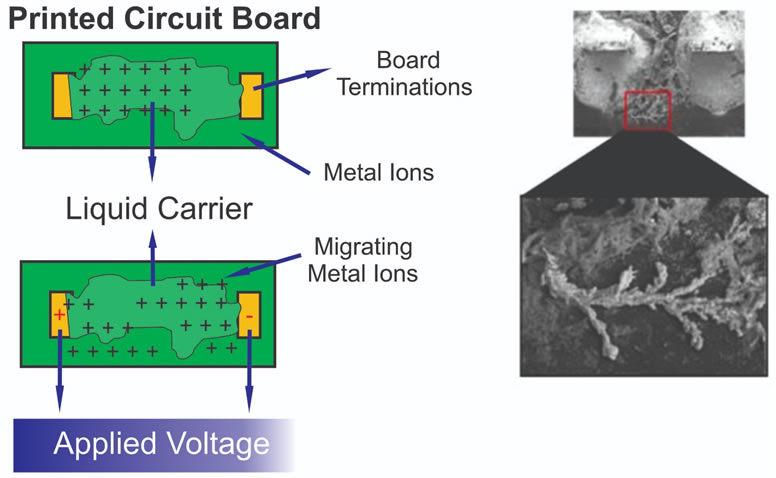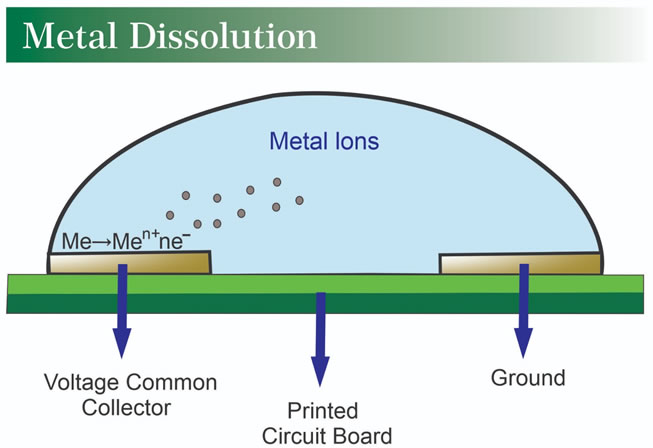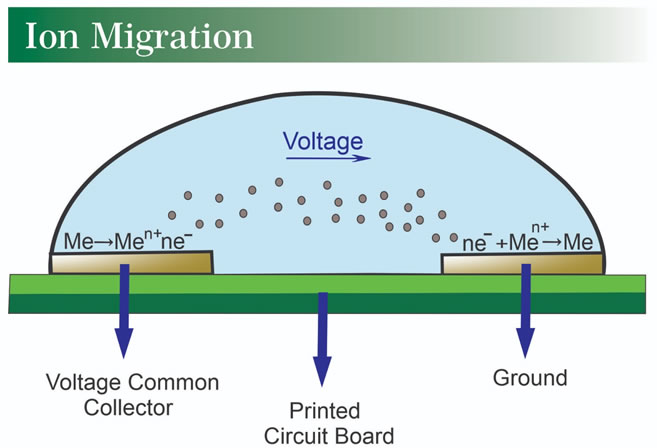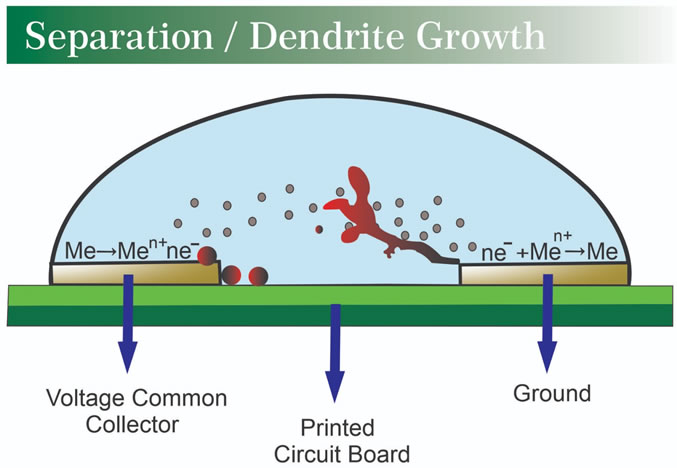
Electrochemical Migration occurs when dense current leakages cause conductive metal filaments across a printed circuit board (PCB), resulting in dendrites and surface contamination. These dendrites can cause field failures and can be intermediate or permanent. PCBA reliability is influenced by soldering materials' chemistry, residues' activity, and other factors like PCB material composition, uncleaned flux residue, active chemistry concentration, board surface roughness, and environmental conditions like humidity and temperature.
 |
Metal DissolutionA strong alkaline condition, typically caused by environmental pollutants or flux residue, attacks the anode and power-leading contacts, forming dried corrosive residue along the printed circuit board. |
 |
Ion MigrationThe concentration of ions in alkaline conditions influences dendrite growth, with current flow promoting future formation and potential short on PCBAs, as they spread out along the concentration gradient. |
 |
Dendrite GrowthThe cathode near the ground potential experiences high acidic conditions and a high concentration of positively charged ions. This leads to the deposition of metal dendrites, a micro plating cell that forms a bridge between the cathode and anode. |
